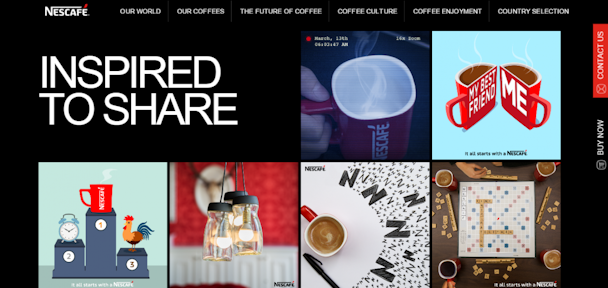Nescafé is right – traditional online channels are a grind for consumers
Like many working in ecommerce, I was not in the least bit surprised by Nescafé recent online transition to a Tumblr-only platform. Nescafé was quick to describe the brand website as ‘dead’, not a total shock for those of us in this space.

There’s been an almost unspoken acceptance that many elements of online marketing have failed to live up to expectations, particularly for FMCG brands. Nescafé appears to have not only publicly admitted this but has actually taken steps to address the issue.
For too long now FMCG brands have relied on passive websites, social noise and display ads to ‘engage’ with consumers. Not only do these channels provide little opportunity for true measurability (as we all know, clicks don’t mean buys) but they also seem oddly dated in the current digital landscape. Despite smartphones making everyone a content creator, and consumers readily sharing product based content, the concepts of collaboration and contribution have largely been ignored by many FMCG brands.
To make matters even more challenging for brands, consumers are increasingly taking control of their online experiences, becoming more savvy and allergic to straightforward advertising (just look at the flurry of downloads of the now-you-see-it-now-you-don’t Peace ad blocker). Traditional display ads just won’t cut it for much longer.
It’s also time brands stopped treating their online channels like they’re simply brochures to remind customers to pick up their products in-store. Instead they should look to invest in channels and content which facilitate some form of value exchange, and give consumers a genuine reason to choose them over the competition.
Nescafé has taken a bold first step with Tumblr, introducing more dialogue into the brand-consumer relationship and connecting directly with its customers. But it has also gone a step further. It has given consumers the ability to act on their impulses and easily purchase items on the same page, without interrupting the experience. Content has been transformed from a tool to raise brand awareness or a reminder to pick up the product in-store, into a valuable sales channel. In effect, it has supercharged point of sale advertising online.
This should be looked upon as something of a tipping point and I expect to see more FMCG brands move away from traditional one-way channels, instead opting for more collaborative online engagement and investing in ways to directly turn that into sales at checkout. This approach will drive sales and lead to new levels of insight into which forms of marketing are most effective. For an industry so used to buying eyeballs, this could be a very different world.
A recent report forecasts that global FMCG online sales will hit $130billion by the end of 2025. It’s not an unrealistic goal for the future – but it can only be achieved if brands change tack online and give shoppers legitimate reasons to choose them, and then make it easy to do so.
Richard Kelly is the founder and CEO of Adimo
